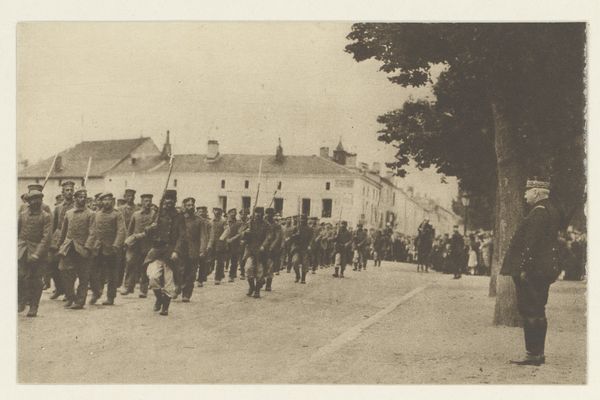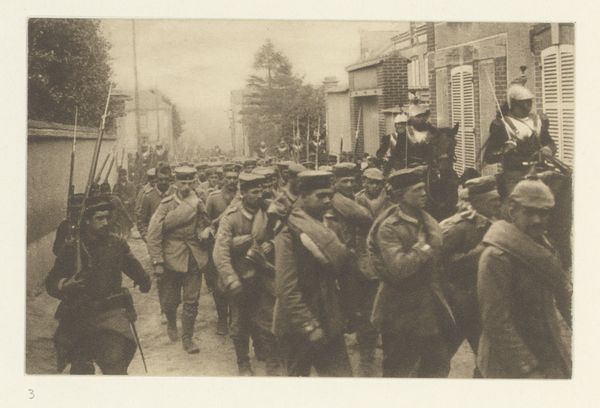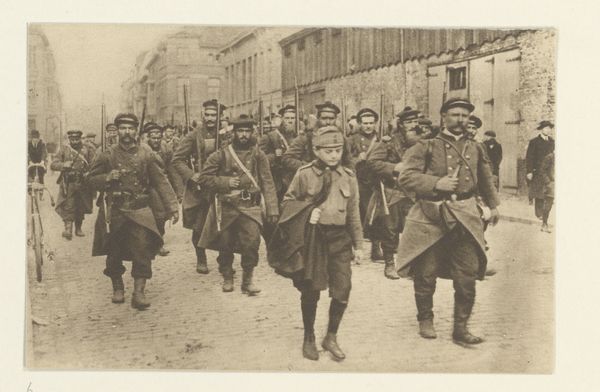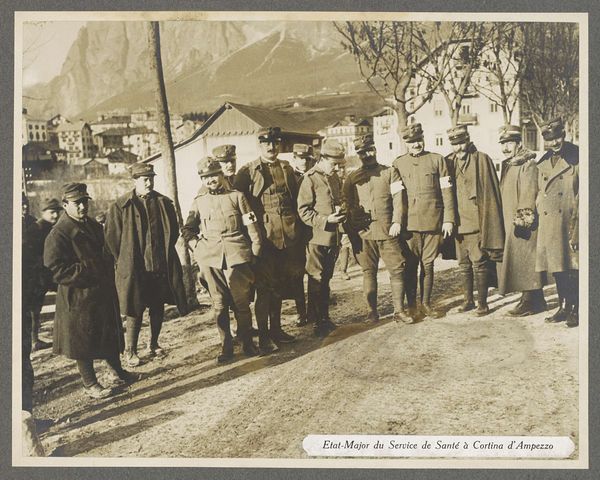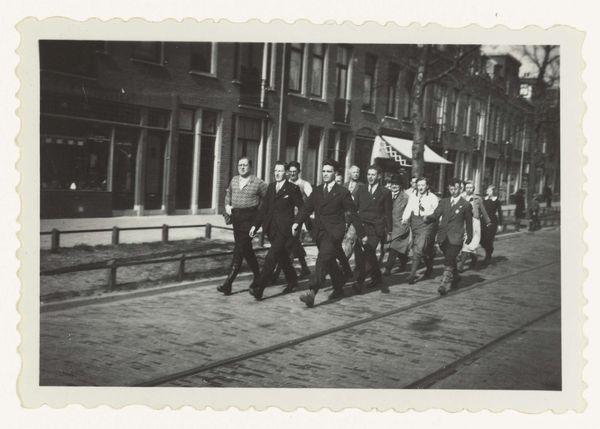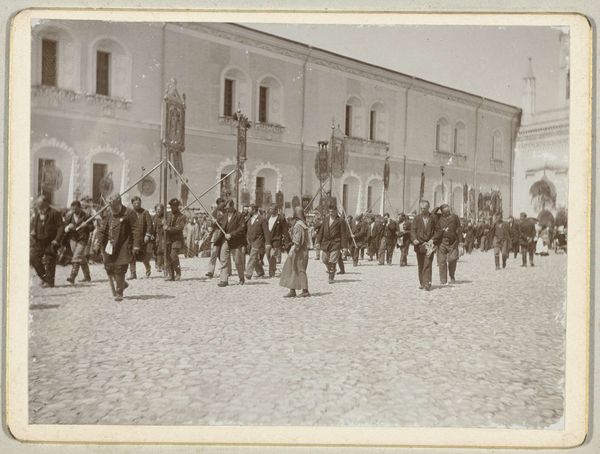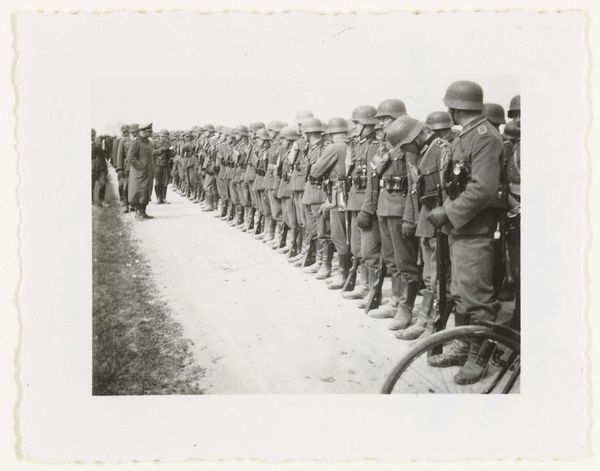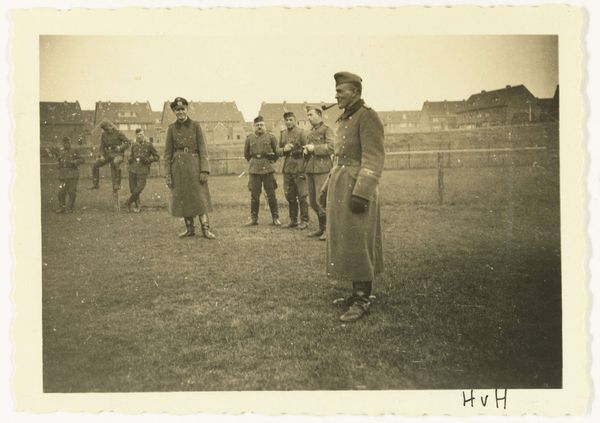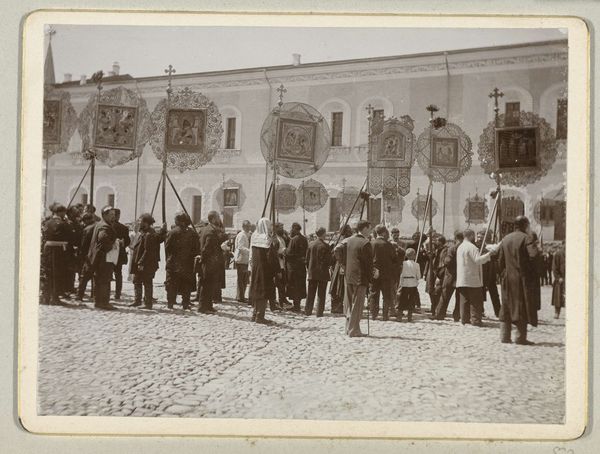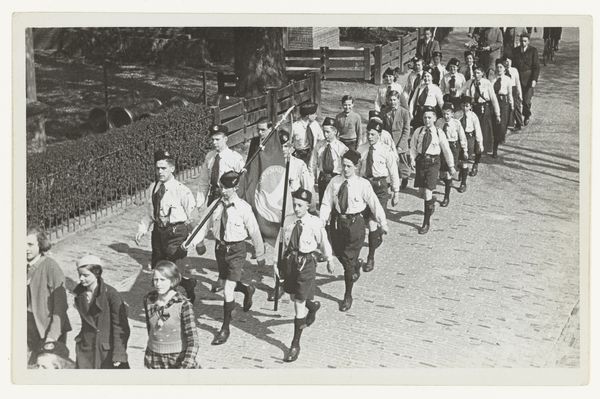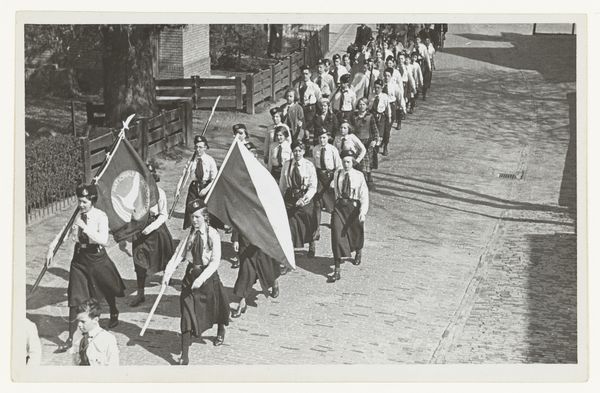
De Duitschers doen aanval om de beroemde top van de Hartmannswillerkopf te heroveren (...) waarbij zij 1600 krijgsgevangenen verloren die men hier door een gehucht in Fransch Lotharingen ziet defileeren 1914 - 1915
0:00
0:00
print, photography, gelatin-silver-print
# print
#
war
#
landscape
#
archive photography
#
photography
#
historical photography
#
expressionism
#
gelatin-silver-print
Dimensions: height 90 mm, width 140 mm
Copyright: Rijks Museum: Open Domain
Curator: This gelatin-silver print, bearing the lengthy title "De Duitschers doen aanval om de beroemde top van de Hartmannswillerkopf te heroveren (...) waarbij zij 1600 krijgsgevangenen verloren die men hier door een gehucht in Fransch Lotharingen ziet defileeren," was created sometime between 1914 and 1915. What are your first thoughts? Editor: Stark. The muted tones and almost oppressive greyness immediately convey a sense of bleakness, reflecting the war's somber reality. There's also something repetitive about the marching figures and architecture which creates a striking, somber visual rhythm. Curator: Indeed. This image captures German prisoners of war during World War I, specifically in French Lorraine. The print itself, a gelatin-silver process, allows for a mass production of these images—revealing its circulation as propaganda. Think about the consumption of these prints back home; imagine how they were used to construct public opinion, and maybe boost morale. Editor: It's also intriguing how the composition leads the eye. The perspective, the strong horizontal lines formed by the marching soldiers and the buildings, draw attention to the seemingly endless line of figures and highlight the scope of human loss during that conflict. We must look closer at the soldiers' figures—the somber gaze—or rather their absence of individual emotion—further intensifying the print’s gravity. Curator: Absolutely, this work speaks volumes about labor too—the material labor in the trenches, of course. But the material impact extends further to encompass the social labour required to produce, circulate, and consume these types of images. Think of the editors selecting photographs, printing press operators making copies for circulation, and viewers shaping narratives and confirming beliefs at home. Editor: It makes you think about the intentional choices made regarding its distribution; consider where these photographs may have been shown, and for what end they were made, influencing emotions by aesthetic decisions as much as subject matter. Curator: Precisely, it is not merely a window onto a historical moment but an actively produced artifact which had purpose and a life of its own in early 20th century social and material worlds. Editor: Right, by analyzing its composition, lighting, and stark use of black and white, one can appreciate this piece's haunting, symbolic message, offering valuable insights into war. Curator: The convergence of process, use, and social effect are telling here and it is hard to pull them apart. Thanks to this close-looking session we both can walk away with better insight.
Comments
No comments
Be the first to comment and join the conversation on the ultimate creative platform.

